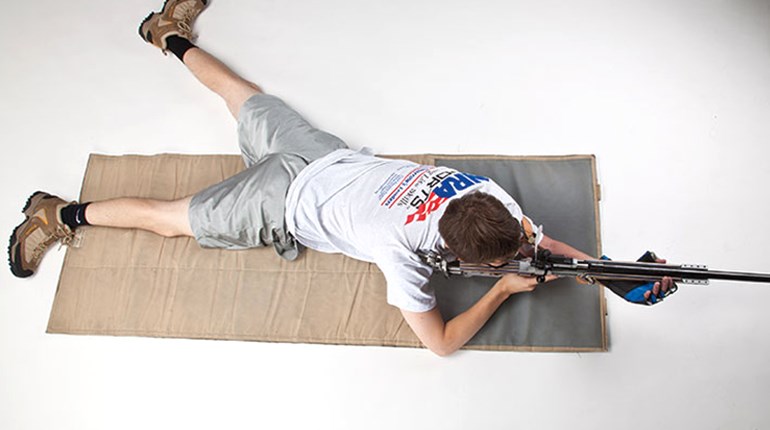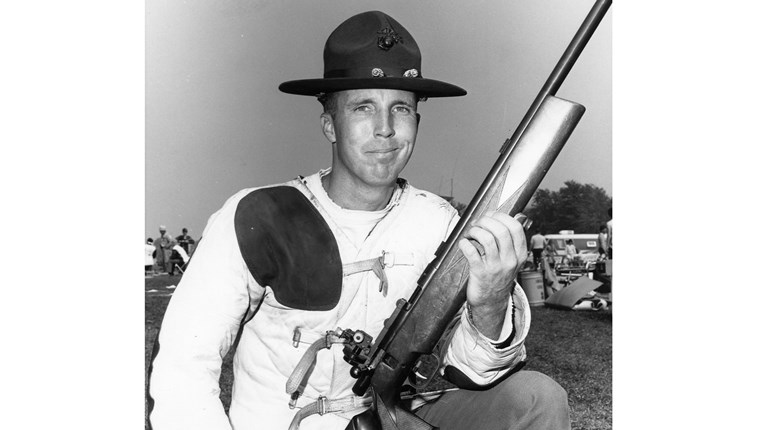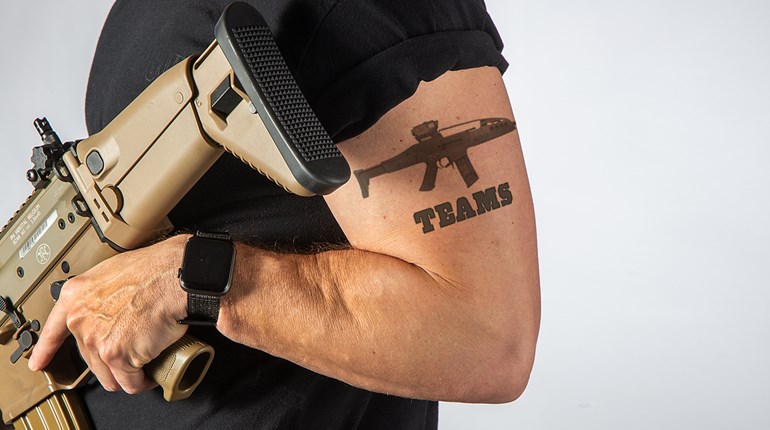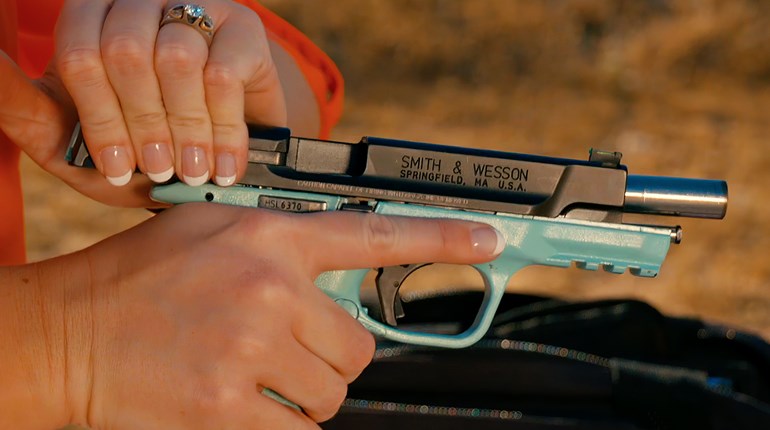
Over the past several years we have published articles on safe gun handling rules, shooting fundamentals, elements of a good shooting position and how to grip a pistol. In last month’s article, we introduced you to the bench rest, Isosceles and Weaver positions. This month, we’ll cover Modified Isosceles, Modified Weaver and conventional one-hand positions. As always, we will use the NRA’s eight steps method of teaching a shooting position. The steps are: study the position, practice the position without the pistol, practice the position with the pistol, align the position with the target, dry-fire, live fire, zero the pistol and continue to shoot, and confirm the zero.
Modified Isosceles Position
The Modified Isosceles position incorporates the natural fully-extended arms of the isosceles position with the stability of the Weaver feet position, which allows for better recoil absorption.
1. Study the Modified Isosceles Position:
• Feet are positioned about shoulder-width apart, strong-side foot rearward about a step back.
• Your weight is forward on balls of your feet to help manage recoil.
• Knees are slightly flexed.
• Lean slightly forward again to help with recoil management.
• Head is level.
• You will look straight forward through the center of your glasses.
• Shoulders are in a neutral position and arms raised without pushing the shoulders forward and lowering the head.
• Both arms are extended forward toward the target forming an A frame.
• Elbows are extended out and turned up, but not locked, gripping the pistol in the normal two-handed grip.
Modified Weaver Position
In the Modified Weaver position, the arm positions are modified. The strong-side arm is almost fully extended, but still bent, enabling it to flex and absorb recoil. The weak arm is still pulled back on the strong hand. The modified Weaver position offers the same stability as the standard Weaver, but feels more natural.
1. Study the Modified Weaver Position
• Feet are positioned about shoulder-width apart, strong-side foot rearward about a step back.
• Your weight is forward on balls of your feet to help manage recoil.
• Knees slightly flexed.
• Lean slightly forward, again to help with recoil management.
• Head should be level, or tipped slightly to the side to properly view the sights.
• Weak-side shoulder is angled toward the target.
• Bring the gun to eye level.
• Strong-side arm is almost straight forward into the weak hand.
• Weak-side elbow is pointed downward. Simultaneously, the weak hand pulls rearward.
• The tension between the two hands is the most functionally significant feature of this position.• Gripping the pistol in the normal two-handed grip.
One hand position for conventional (Bullseye) Position
This position is mandatory per the rule book to make the competition more demanding. A high master conventional pistol shooter will shoot six or more bullets in the 3-inch 10-ring at 50 yards in the slow-fire match and close to five out of five in the 10-ring in 10 seconds at 25 yards.
• Stand at about a 35- to 45-degree angle to the firing line with your strong-side foot forward.
• Knees are not locked, so you maintain good blood flow to the legs.
• Lean slightly forward to help with recoil management.
• Head is level
• You will look straight forward through the center of your glasses.
• Shoulders are in a neutral position and arms raised without pushing the shoulder forward and lowering the head.
• Bring the gun to eye level, so you will look straight out of the center of your glasses.
• Strong-side arm is fully extended forward to the target, but not locked.
• Weak arm is relaxed, wrapping forward and supported by the weak-hand thumb hanging inside your belt.
• Gripping the pistol in the normal two-hand grip.
This article covers the basic steps to learn the pistol shooting positions. For more details and help in mastering the two-handed positions contact an NRA Personal Protection Inside the Home Certified Instructor or NRA/CMP/USA Certified Pistol Coach for the one hand position. Having a good coach or instructor can save years of self discovery on mastering pistol shooting and thousands of dollars in guns and ammunition.






































